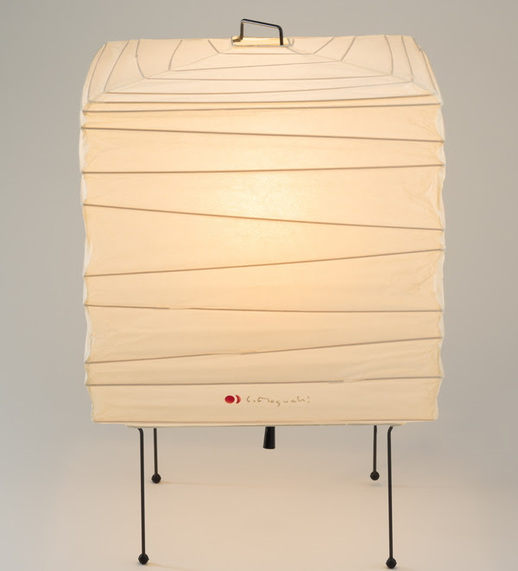2024.06.06
宙ちゃんの「伝統文化一直線」宙ちゃんの「伝統文化一直線」 第6回 AKARIシリーズに思う
近藤宙時=日本伝統文化検定協会理事

「AKARI」のフロアランプ
70年以上前、岐阜提灯(ぎふぢょうちん)と芸術家イサム・ノグチ※のコラボレーションによって生み出された「AKARI」シリーズと呼ばれる照明は、ペンダントライト、スタンドライトからテーブルランプまで200種類以上ものバリエーションを持ちます。どれも和室はもちろんのこと、洋間にも、高層ビルの大ホールにさえピタリとくるだけでなく、近未来を描いた映画の中でも使われそうなアバンギャルド(前衛的)な雰囲気と同時に、人肌のような程よい温もりと、童心に返るような懐かしさを感じさせます。
その秘密は何でしょうか。恐らく、時代を超越したフォルムを形作っているのは、最高級の行灯(あんどん)として江戸時代には将軍家や大奥でも使われた岐阜提灯の伝統技法そのものだからでしょう。
岐阜提灯の特徴は、骨として用いる竹ひごが細く、輪を重ねるのではなく螺旋(らせん)状に巻き付けて骨組みを作ること、そしてその骨組みには美濃和紙が張られていることです。もちろん、全ての工程が職人の手によってなされます。
しかも驚くことに、「AKARI」シリーズは提灯の最大の機能をちゃんと持っています。つまり、折り畳めるのです。竹ひごと美濃和紙で作られているから、見た目よりもはるかに軽く、持ち運びやすい。岐阜提灯のコア・コンピタンス(競合品にはない強み)が丸ごと詰まっているのが「AKARI」シリーズです。
日本の歴史、風土から生まれた伝統工芸の神髄をいささかも損なわずに、私的な和室から公的なホールまで、また現代だけでなく未来まで、人々を温もりのある明かりで包み続けてくれる光の彫刻。「AKARI」シリーズは、ともすれば古臭いもの、過去のものと思われがちな伝統工芸品の進むべき道を示していると思います。
歴史をひもとくと、イサム・ノグチが岐阜提灯に新たな命を吹き込んだことに通じる例は少なくありません。戦国時代から江戸初期にかけての大名茶人古田織部は、それまできれいな円形をしていた茶碗や鉢をひょうげ(面白おかしくデフォルメ)させて、ダリのアートにも通じるような織部焼をプロデュースしました。織部焼は現代でも日本の食卓を飾っていますし、尾形光琳はもちろんのこと、酒井抱一や葛飾北斎も陶磁器や漆器の下絵を描いています。
次代のイサム・ノグチや古田織部が伝統工芸をアップデートしてくれることを楽しみにしています。
※イサム・ノグチ(1904~1988) 20世紀を代表する彫刻家。英文学者で詩人の野口米次郎と作家レオニー・ギルモアとの間に米ロサンゼルスで生まれ、少年期を日本で過ごした。香川県高松市牟礼町のアトリエ跡はイサム・ノグチ庭園美術館となっている。
カテゴリー: 宙ちゃんの「伝統文化一直線」
関連タグ: #和紙





